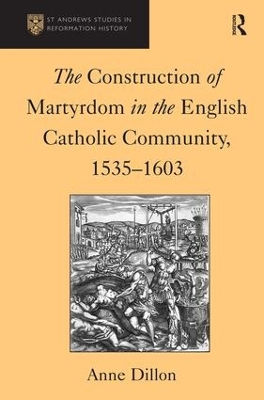St Andrews Studies in Reformation History
2 total works
The Construction of Martyrdom in the English Catholic Community
by Anne Dillon
Published 31 December 2023
Between the accession of King James I in 1603, and King James II in 1685, eighty-one English Catholics were put to death by the state for treason and fifteen others died in prison while awaiting execution. This book considers the ways in which the English Catholic community, both at home and abroad, transformed these deaths into acts of martyrdom. Whilst the subject of Protestant martyrdom, personified by Foxe's Actes and Monuments, continues to be the centre of significant scholarly research, much less work has been done on Catholic martyrdom in seventeenth century England. Through a detailed study of the nature and function of the rhetoric of images, manuscripts and texts, this book redresses the confessional balance and maps the changing nature and self-image of English Catholicism during the turbulent years of the 1600s. It demonstrates how the rhetoric of martyrdom came to reflect and highlight many of the arguments and divisions within the English Catholic community as it sought to come to terms with its minority status in a country increasingly dominated and defined by militant Protestantism. As well as investigating Catholic laity, the role and differing attitudes of the religious orders operating clandestinely in England are examined, showing how Benedictines, Franciscans and Jesuits adopted very different approaches to, and justification of, their missionary duties. The attitudes of English Catholics to their co-religionists martyred abroad, in the European wars and colonial missions, are also looked at, showing how international concerns were shared and adopted. Following on from her previous book The Construction of Martyrdom in the English Catholic Community: 15??-1600, this work from Anne Dillon provides a much needed survey of English Catholic attitudes to martyrdom and self-image in the seventeenth century.
The Construction of Martyrdom in the English Catholic Community, 1535-1603
by Anne Dillon
Published 28 January 2003
Between 1535 and 1603, more than 200 English Catholics were executed by the State for treason. Drawing on an extraordinary range of contemporary sources, Anne Dillon examines the ways in which these executions were transformed into acts of martyrdom. Utilizing the reports from the gallows, the Catholic community in England and in exile created a wide range of manuscripts and texts in which they employed the concept of martyrdom for propaganda purposes in continental Europe and for shaping Catholic identity and encouraging recusancy at home. Particularly potent was the derivation of images from these texts which provided visual means of conveying the symbol of the martyr. Through an examination of the work of Richard Verstegan and the martyr murals of the English College in Rome, the book explores the influence of these images on the Counter Reformation Church, the Jesuits, and the political intentions of English Catholics in exile and those of their hosts. The Construction of Martyrdom in the English Catholic Community, 1535-1603 shows how Verstegan used the English martyrs in his Theatrum crudelitatum of 1587 to rally support from Catholics on the Continent for a Spanish invasion of England to overthrow Elizabeth I and her government. The English martyr was, Anne Dillon argues, as much a construction of international, political rhetoric as it was of English religious and political debate; an international Catholic banner around which Catholic European powers were urged to rally.

